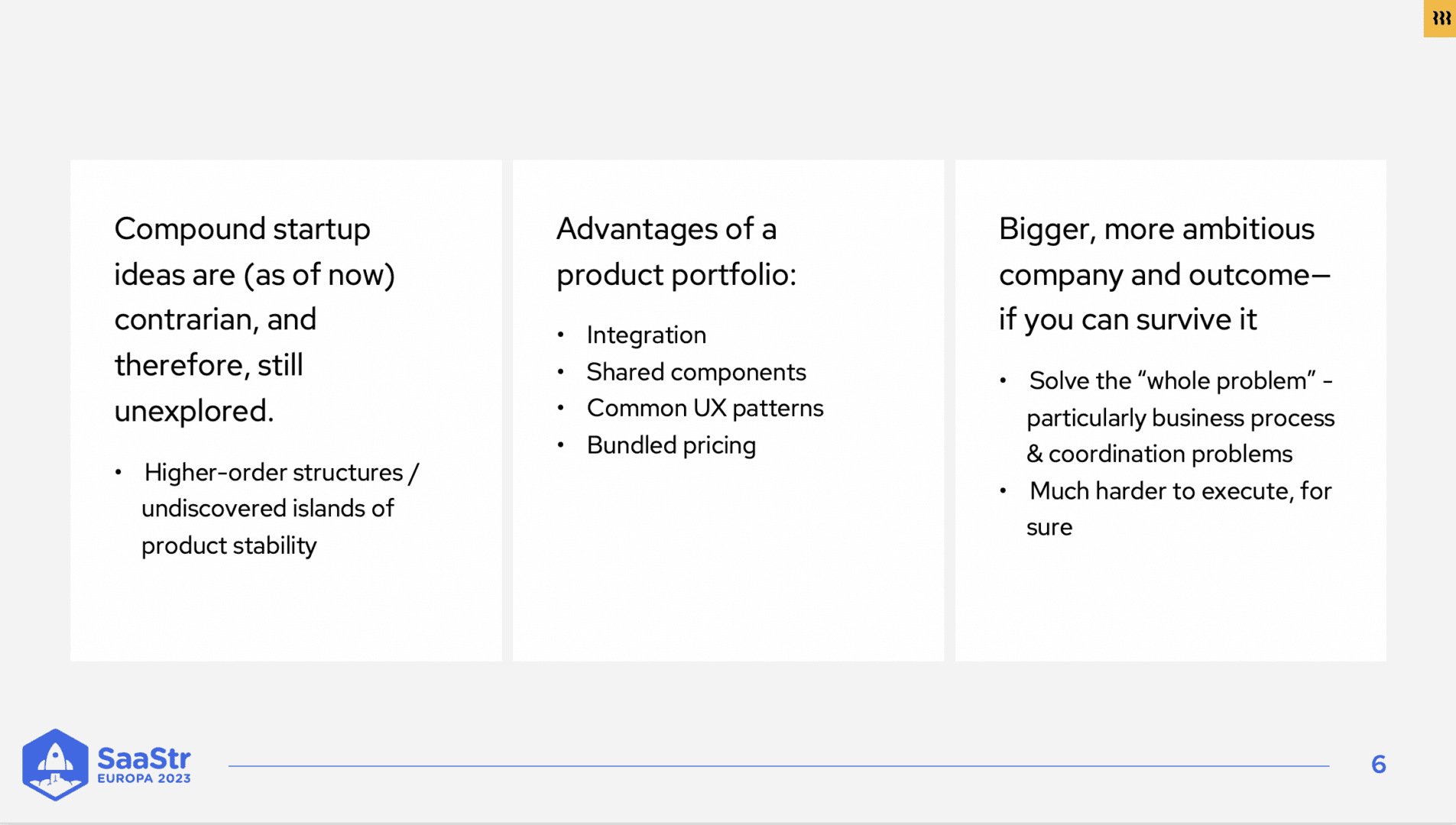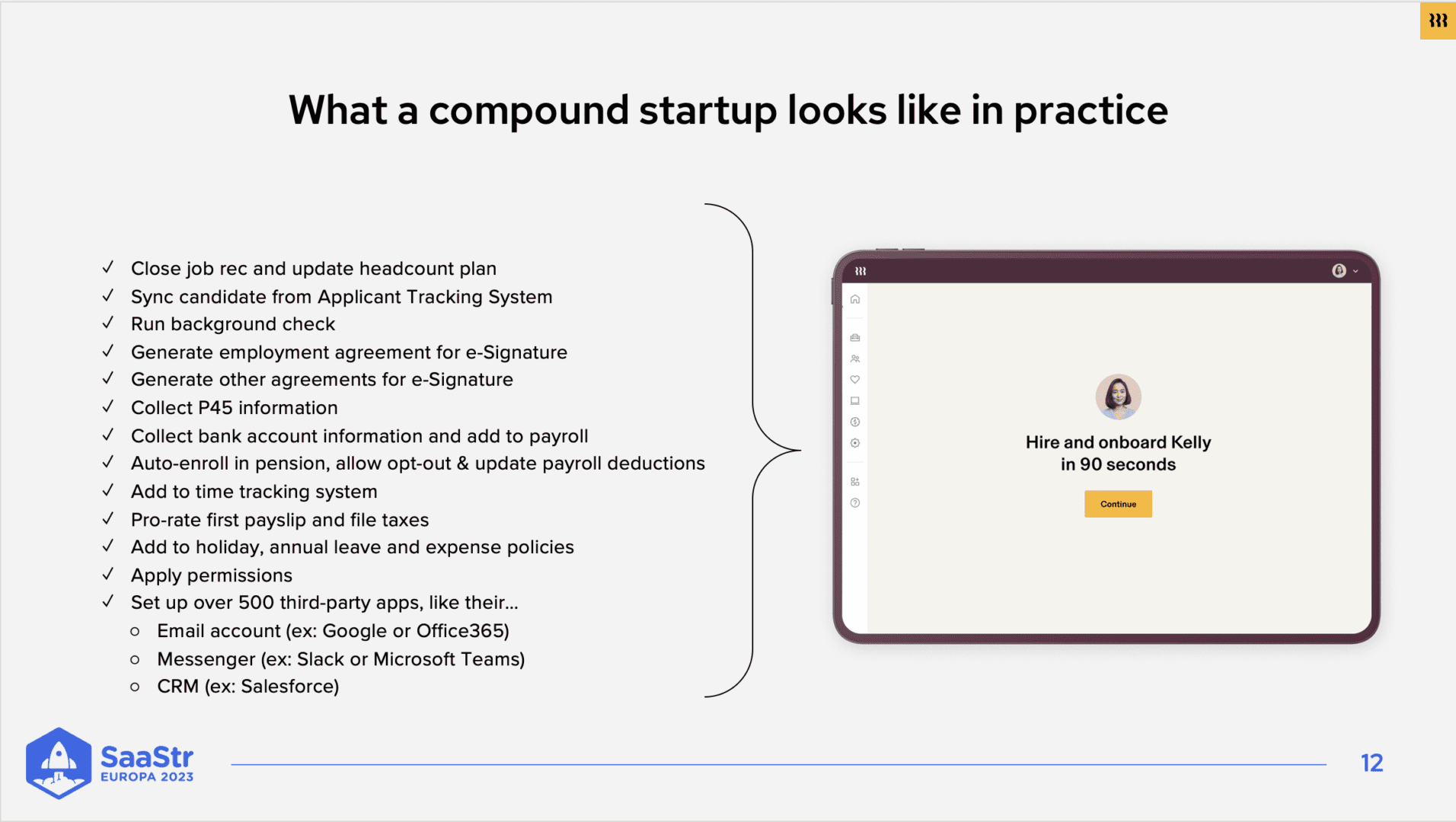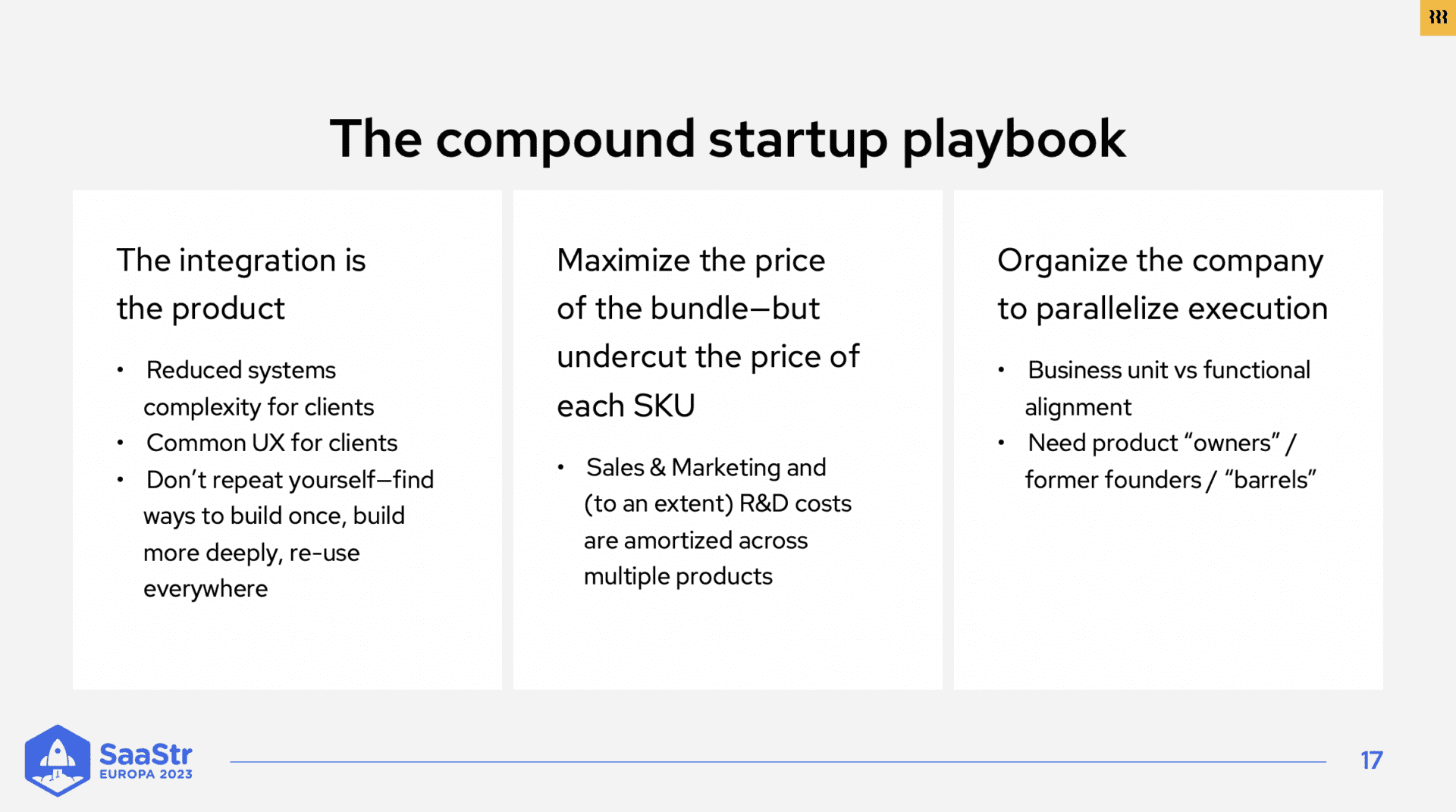At the last SaaStr Europa, Parker Conrad, founder-CEO of Rippling, joined us for a standing-room only session on building a “compound startup”, i.e. multiple products at the same time, even at the earlier stage.
We’ve get 3,000+ of the best in SaaS together again THIS JUNE in LONDON, 4-5 June for 2024 SaaStr Europa!! See you there!
And now let’s look back at the learnings from Parker:
If there’s one rule almost everyone universally agrees with when building software, it’s that focus is critical. Conventional wisdom says that if you narrow your focus, you can go really deep.
Parker Conrad, the CEO of Rippling, disagrees.
As a founder of two different compound startups, each valued at above a billion dollars, he’s one of the best to share this alternative perspective.
Point Solution Software Is Extremely Limiting
There exists a set of companies that could be built and are often not built that would break this rule of building software with a singular focus.
Parker shares a few problems with this conventional wisdom.
#1 – It limits you to problems contained within one vertical or type of business.
Some of the most profound problems that we face as companies are about collaboration across the business and how different systems interface with one another. Narrowing down what you do doesn’t lend itself to solving these kinds of problems.
#2 – Everything’s already been picked over.
Fifteen years ago, you could start a SaaS company in any vertical and succeed. Now, almost every space has two or three things in it, so with a narrow point solution approach, there isn’t a lot of opportunity left.
Beyond these two issues, companies face the problem of figuring out how to get to product number two when your entire company is oriented around having just one product.

The Compound Startup — Unexplored Terrain
The alternative rule for building software is a company that builds multiple products in parallel that are deeply integrated and seamlessly interoperable with one another — a.k.a. the compound startup.
The advantages of a compound startup are:
- Relatively unexplored terrain thanks to strong conventional wisdom telling founders this is not the path to take. “There are undiscovered islands of product market fit that are just beyond the horizon line,” says Conrad. “So if you can sail out and make it there, everything else about your company will work.”
- Much more deeply integrated products, and usually with some underlying system of record, create a seamless experience for customers.
- Building once and really well, which means your critical components can be 100 times deeper than any competitors can afford to go. If you can seamlessly connect all of your products, some of the most challenging work is already done when it’s time to build something new.
- Clients already know how to use your products, so they’re more likely to buy something new from you because they’ll already know how everything works.
- You can run circles around competitor pricing with compound products because you can optimize pricing over the entire bundle of SKUs instead of needing to make it all back on one specific product.
The only knock with building a lot of things is that you need to build them all well. Building things badly doesn’t work, so get really good at parallel execution across all products because you’re only as strong as your weakest link.

Disconnected Systems Give Compound Startups The Advantage
If you’re thinking about building a compound startup, the most important thing to start with is the integration of the product.
You want to build in a space where there are problems because of disconnected systems. When you combine these disconnected systems, you can unlock many new product capabilities, simplify things for the user, and find areas where you can pull out functionality you build only once.
An Example Of Focus Gone Awry
Rippling is launching into the UK market, and it’s a great example of what happens when competitors and companies get too focused.
If you look at how companies run payroll in the UK, you’ll see that some use spreadsheets, and some have HRIS systems, and then pensions, hours, and annual leave are often managed in separate systems.
Once in payroll, they have to deal with all the change management in the systems, and a lot can go wrong. Someone goes on annual leave, and you pay them an hourly rate that’s historical over the last year, which means that whatever system tracks leave has to be aware of overtime paid out.
It’s a tremendous amount of work!
The alternative? One system that does everything together, i.e., Rippling.
Everything happens in one place — new hires fill out employment agreements and enroll in systems. Everything takes 90 seconds.
The takeaway?
Find ways to help customers save money where you can also charge more overall. Per product, they’re saving money because they’re sourcing multiple SKUs through you.
You want to organize your company into business units with strong entrepreneurial leads that can run individual products independently to sort of parallelize execution.

Key Takeaways
Being a compound startup has given Rippling its greatest enduring advantage, and it’s why the company has unusual growth persistence year over year.
By purposefully and strategically taking on all of its products in parallel and doing a thing that companies aren’t “supposed” to do, they have built an incredible business.
Conrad’s Compound Startup Playbook key takeaways are:
- The integration of the product. Seamless integration means reduced systems complexity for clients, a common UX for clients, and you don’t have to repeat yourself. If you can find ways to build it once and more deeply, you can reuse it everywhere.
- Maximize the price of the bundle, but undercut the price of each SKU. Sales and marketing (and, to an extent, R&D) costs are amortized across multiple products.
- Organize the company to parallelize execution. Pay attention to business unit vs. functional alignment. You need product owners, former founders, and entrepreneurial-type leads to run individual products independently.

